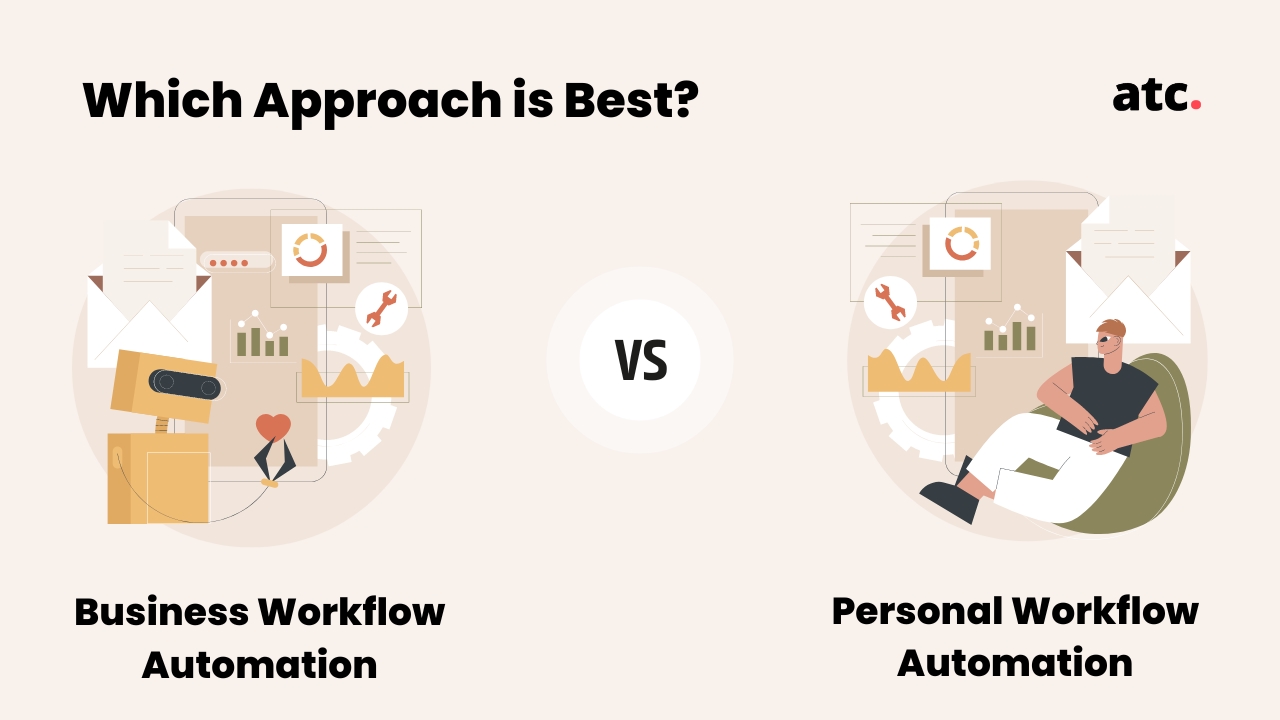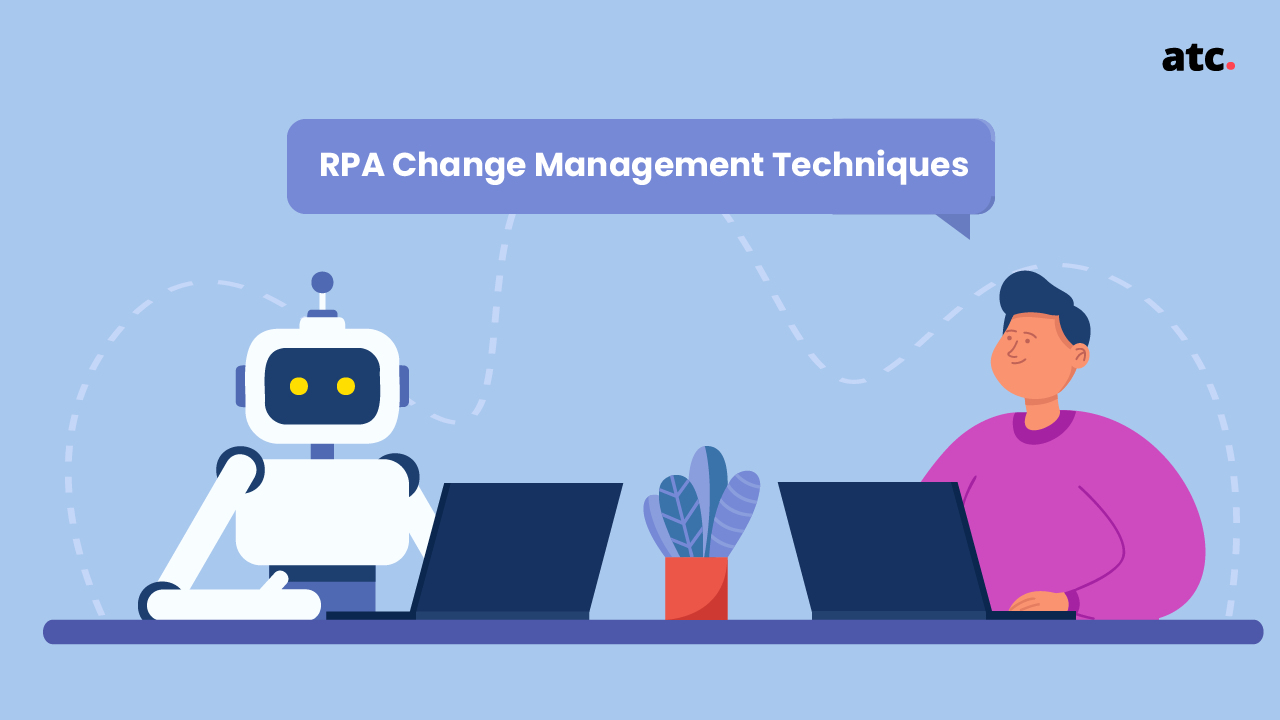Subscribe to the blog
When it comes to business efficiency, few things are as important as a successful Robotic Process Automation (RPA) roadmap. By automating simple and repetitive tasks, you can free up your team to focus on more pressing matters. But crafting an effective RPA roadmap can be difficult. In this blog post, we'll outline the key steps to take when planning your RPA implementation. So read on for tips that will help your business succeed with RPA!
Phase One - Identifying Business Processes that need to be automated
Selecting the right set of business processes to automate is critical when it comes to RPA implementation. A comprehensive examination of all operations, both within and between departments is required. This will assist in deciding which processes are appropriate for automation. RPA strategists and architects assess a business's current workflow and identify areas where RPA could make a real difference. They also work with businesses to design custom RPA solutions that fit their specific needs.
When it comes to deciding which business processes to automate with RPA, there are a few factors to consider. First, you'll want to identify which processes are most time-consuming and error-prone. These are the perfect candidates for automation, as RPA can help to speed up the process and reduce errors. You'll also want to consider which processes would provide the most value if automated. For example, automating a process that saves your company time and money is likely to be more valuable than automating a process that simply makes things more convenient for your employees. Finally, you'll need to evaluate whether the existing infrastructure and systems are able to support RPA. If not, you may need to make some changes before implementing RPA. By taking all of these factors into consideration, you can ensure that you choose the right business processes to automate with RPA.
Phase Two - Building a business case for RPA implementation
Once you have a good understanding of the potential for RPA, the next stage is to build a business case for its implementation. This involves cost-benefit analysis and ROI calculations to ensure that RPA is a viable option for your organization. By doing this, you will be able to show that RPA is a viable option for your organization and that the benefits outweigh the costs. Additionally, building a solid business case will help you secure the necessary funding for RPA implementation.
Phase Three - Preparing the proof of concept
Any organization that has implemented RPA knows that preparing the proof of concept (PoC) is essential to success. The PoC is the first step in validating the technology and ensuring that it meets the specific needs of the organization. It is also a crucial step in building buy-in from stakeholders. However, preparing a PoC can be a daunting task. There are many factors to consider, and it can be difficult to know where to start. You should be able to clearly define the goals and objectives of the PoC. What do you hope to achieve? What specific processes will be automated? What are the performance metrics that will be used to measure success?
Once the scope of the PoC has been defined, it is important to identify the right team to carry out the project. The team should have a mix of technical and business skills, as well as knowledge of RPA tools and processes. The technical team will be responsible for the development and implementation of the solution, while the business team will provide input on the requirements and use cases. It is also important to have someone on the team who has knowledge of RPA tools and processes, as this will be helpful in troubleshooting and fine-tuning the solution.
Phase four- Designing the RPA Solution
There are many factors to consider while designing RPA, but some of the most important ones are: User management which includes creating user accounts and assigning roles and permissions; License management which is about deciding which licenses to purchase and how many licenses to assign to each user, and determining which machines should have which Robotics Process Automation software installed and how the bots will be monitored and logged. All of these factors must be taken into account in order to create an effective RPA design.
Designing and implementing custom RPA software needs teamwork and inputs from various teams: SMEs -who are experts in this area provide excellent and proactive inputs; RPA Architects - design the framework by integrating the technical possibilities with what the business needs.
Phase five - Developing the RPA Solution
Start by creating a ‘PDD’ (Process Definition Document) that has information about that collection of standard sequences for initialization, cleanup, processing, and error handling as a starting point for development.
A good PDD should include all of the juicy details that a developer would need to know in order to start building out a process. This means that a PDD should have a high level view of the process as well as any relevant sub-processes. In addition, a PDD should include descriptions of all input and output data, any required special handling or processing, and any potential error conditions that need to be anticipated and handled. A PDD is essentially a map that provides direction for the development of a process. By taking the time to create a comprehensive PDD upfront, you can save yourself a lot of time and effort down the road.
Phase six - Testing
Now that you have the RPA solution up and running, it is important to test it thoroughly before putting it into production. This will help ensure that the bots are functioning properly and that they can handle any unexpected inputs. . A testing team consisting the operating user, an SME (Subject Matter Expert) and the RPA developer will be responsible for conducting the assessment and evaluating whether the RPA is ready to deploy.
There are three main phases of testing: functional testing, load testing, and disaster recovery testing. Functional testing simply involves verifying that the bots can perform their tasks correctly. Load testing assesses how well the system can handle large volumes of data, and disaster recovery testing ensures that the system can be quickly restored in the event of an unexpected outage. By thoroughly testing your RPA solution, you can help avoid any potential problems down the road.
Phase seven - Setting in motion
After the RPA Automation solution receives a green light in all domains, it’s time to deploy! Communicate the new processes to all relevant stakeholders and continue to monitor performance. You can refer to the following criteria to check if the automation process is working efficiently: execution rate, execution failure rate, lead time, execution frequency.
The execution rate measures how many tasks are successfully completed in a given period of time. The higher the rate, the more successful the automation process is. The execution failure rate measures the number of tasks that are not completed successfully. A low failure rate indicates a successful automation process. Lead time is the amount of time it takes to complete a task. A shorter lead time means the process is more efficient. Finally, execution frequency measures how often a task is completed. A high frequency indicates a successful automation process. By monitoring these criteria, you can ensure that your automated processes are running smoothly and efficiently.
Phase eight - Regular performance monitoring and modifications
When designing and implementing an RPA solution, it is essential to have a performance monitoring strategy in place to ensure that the solution is performing as expected and to identify any potential issues early on. Regular performance monitoring can help to ensure that an RPA solution remains effective over time and can help to identify issues that need to be addressed. By having a performance monitoring strategy in place, businesses can maximize the benefits of RPA while minimizing the risks.
As the market and business demands change, RPA needs to adapt in order to remain successful. This means that your RPA solution needs to be flexible and able to change according to the specific needs of your business. It also needs to be able to integrate with other systems and software in order to provide a comprehensive solution. With the help of performance reports and analytical insights, your organization's stakeholders can gain access to the data and learn how well the automation processes are operating, leading to much better decisions on the current and future RPA endeavors.
Issues you might face while implementing RPA solutions
In any kind of technological implementation, there are always going to be issues that arise. Robotics process automation is no different. To deliver long-term benefits and value for businesses, each stage of the RPA implementation roadmap must be properly managed. If one of the steps is not handled effectively, the entire RPA plan may break apart and fail to achieve its goal. Some of the potential issues that can come up during the RPA implementation process include:
- IT compatibility issues. RPA software needs to be compatible with the existing IT infrastructure in order to work properly. If there are compatibility issues, it can cause problems with the RPA implementation.
- Lack of clarity about roles and responsibilities. It's important to have a clear understanding of who is responsible for what during an RPA implementation. Otherwise, there can be confusion and potential conflict between team members.
- Cost overruns. As with any kind of project, there is always the potential for cost overruns when implementing an RPA solution. This can be a challenge for organizations to manage, especially if they're on a tight budget.
- Training and change management issues. Many employees will need to be trained in how to use the new system, and there may also be resistance to change from those who are comfortable with the current way of working. Careful planning and communication will be essential to ensure that the transition goes smoothly.
- Picking the wrong process to be automated. Picking the wrong process to automate can be detrimental to the organization’s goals, as it can lead to errors and inefficiencies. For example, if a process is too complex or variable, it may be difficult to program a robot to execute it accurately. Similarly, if a process changes frequently, the robot may need to be reprogrammed often, which can be time-consuming and expensive.
- Setting Unrealistic expectations. RPA is a powerful tool that can help organizations to automate repetitive, manual tasks. However, it is not a silver bullet that will solve all of an organization's problems. If it is not implemented carefully, it can actually create new problems, such as exacerbating existing bottlenecks or introducing new ones. In addition, RPA can sometimes lead to process changes that are not well-understood by those who are responsible for maintaining the robots. As a result, it is important for organizations to set realistic expectations for what RPA can achieve and to plan for potential challenges that may arise during implementation.
It can be overwhelming to try and figure out the best way to get started with RPA. That’s why we’re here to help. Our team of experts will put together a robust RPA roadmap for your business and will guide you every step of the way to get the most value from this transformative technology. We want to make sure that you are getting the most ROI from your investment, so contact us today and let us show you how RPA can benefit your organization.




